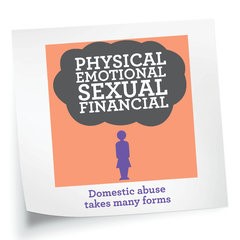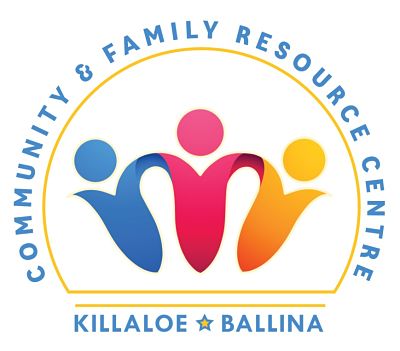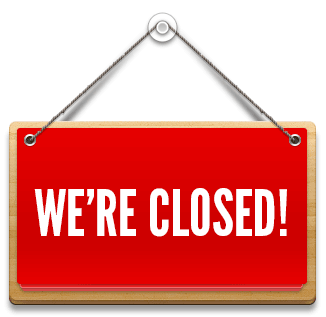Day 5: Domestic Abuse Takes Many Forms
 Domestic abuse is not a once off event, but rather a pattern which escalates over time, and includes multiple forms of abuse: emotional, physical, sexual and financial abuse.
Domestic abuse is not a once off event, but rather a pattern which escalates over time, and includes multiple forms of abuse: emotional, physical, sexual and financial abuse.
We often hear from women that what felt like positive attention and attentiveness at the beginning of a relationship, turned into negative, controlling behaviour as the relationship became more established and it was harder to leave.
Abusers deliberately isolate a woman from family and friends, break down her confidence and independence, and tell her it is her fault that he is doing this. He might constantly criticise her, her efforts in the relationship, and how she does everything, call her names, tell her that she is worthless. This is called emotional abuse, and it can be so constant and relentless that it makes a woman doubt her own instincts that it is wrong, feel ashamed of what is happening to her, and blame herself. There were 11,078 disclosures of emotional abuse to the Women’s Aid Helpline in 2016.
Other examples include abusers not allowing a woman any privacy inside or outside the home, and monitoring her communication. You can read more about emotional abuse here.
Abusers also use physical force and the threat of physical violence to further control women. A caller to the Women’s Aid National Freephone Helpline might start by saying,
‘He would never hit me, but…’
and then describe behaviour including threats to kill her, her loved ones, or himself; physically blocking her from leaving a room; pushing her down on to the bed or other furniture; putting his hand on her neck without squeezing, which all constitute the use of physical force as deliberately controlling and intimidating to her. We also hear from women who have experienced life-threatening physical assaults and beatings, and are sometimes blocked by their abuser from seeking necessary medical attention. You can read more about physical abuse here. There were 3,502 discloses of physical abuse to the Women’s Aid National Freephone Helpline last year.
Sexual abuse within a relationship is another way that abusers take away a woman’s confidence and make her feel ashamed. It can include rape, sexual assault and sexual coercion, which means not feeling like you have a choice or a say about whether you have sex and what sexual activities you take part in. Sexual assault and abuse within a relationship are a crime. If a woman is raped, we would always encourage her to link in with a local rape crisis centre and explore with her if she feels comfortable reporting the crime to the Gardai. There were 695 discloses of sexual abuse to the Women’s Aid National Freephone Helpline last year, including 316 cases of rape by a current or ex intimate partner.
Domestic violence is where one person uses abuse to control and assert power over their partner in an intimate relationship. It can be physical abuse, emotional abuse, sexual abuse or financial abuse. In the majority of cases it is perpetrated by men and experienced by women. Any woman can be affected and it can happen in any home. There may be warning signs that your relationship is abusive.
Suzanne’s story | Women’s Aid – Domestic violence service in Ireland
 Suzanne’s story. I first met John when I started working at the hotel. I had just left college and it was my first ‘real’ job. I started …
Suzanne’s story. I first met John when I started working at the hotel. I had just left college and it was my first ‘real’ job. I started …
What is physical abuse? httpss://www.womensaid.ie/help/domesticviolence.html
Physical abuse is perhaps the most recognisable form of abuse. It can result in physical injury, and in some cases it can be life threatening. It doesn’t always leave visible marks or scars. Having your hair pulled or an egg thrown at you is domestic violence too. Don’t underestimate what is happening to you. Over time it often gets worse.
It includes:
- being pushed
- being punched and slapped.
- being beaten with sticks, golf clubs, hurley sticks, hammers and belts.
- being stabbed with knives or broken glass.
- being gagged to stop the screams during physical assaults.
- being spat and urinated on.
- being bitten severely, being pulled by the hair.
- being beaten and raped while pregnant, being thrown down the stairs while pregnant.
- having your head banged off walls and car dashboards.
What is emotional abuse?
Emotional abuse is a highly effective means of establishing a power imbalance within a relationship. It is often unseen or intangible to those outside the relationship. Emotional abuse is as harmful as physical violence. It often involves threats of and actual physical or sexual abuse.
It includes:
- being put down
- being constantly criticised
- being constantly controlled and monitored by the use of technology: including their phone use being checked and recorded; their mobile phone logs being checked and having all text messages read; abusers using spyware to read emails and secretly installing cameras in the house.
- threats by the abuser to kill women, the children, members of women’s family, or himself, including details of how and when he will do it.
- property being destroyed including their cars, furniture, clothes, and home.
- being referred to using derogatory language including calling women ‘it’, ‘bitch’.
- being trapped as the abuser takes their car keys, empties the petrol from their cars, and steals or smashes phones so women cannot seek assistance.
- never being left on their own; women being followed room to room; being accompanied to all outside activities.
What is sexual abuse?
Where there is a dynamic of control and abuse in an intimate relationship, the likelihood of sexual coercion and abuse is high. It is harder for women who are being abused by their partner to negotiate a free and equal sexual relationship with that partner.
It includes:
- being repeatedly raped and beaten; being forcibly stripped and raped; being told that it is their duty to have sex with the abuser.
- being raped in front of the children.
- being raped when particularly physically vulnerable, e.g., directly following childbirth.
- Sexual degradation including the enforced use of graphic and hardcore pornography.
What is financial abuse?
Financial abuse is a form of domestic violence in which the abuser uses money as a means of controlling his partner. It is a tactic that abusers use to gain power and dominance over their partners and is designed to isolate a woman into a state of complete financial dependence. By controlling the woman’s access to financial resources the abuser ensures that she will be forced to choose between staying in an abusive relationship and facing extreme poverty.
It includes:
- Controlling the family finances
- Not being allowed to have independent income
- Having to account for all purchases including providing receipts and account for all spending.
- Not being allowed to buy personal items such as tampons and sanitary towels.
- Taking all of the woman’s bank cards and emptying joint accounts.
- Non-payment or erratic payment of child maintenance.
- Women’s signatures being forged on cheques.
- Withholding money because women do not want to have sex.
- Denying money for food for women and the children and money to pay household bills.
- Using the recession to justify the abuse.
Safety Planning httpss://www.womensaid.ie/help/options/safetyplanning.html
Women’s Aid understands that you are probably doing many things to keep yourself safe and you are the best judge of the level of risk you are at.
When living in an abusive situation, safety, yours and your children’s, is the number one priority. You cannot control the abuse but you may be able to take steps to protect yourself and your family. Women’s Aid can help you put together a safety plan and refuges and local domestic violence services can do the same.
Staying
Leaving an abusive relationship can be fraught with difficulty and may not be the best option for you at a particular point. If you plan to stay in the relationship, there are certain precautions you can take. For example:
- Keep a phone in a room that locks from the inside and memorise all emergency numbers
- Carry a mobile phone.
- Decide and plan where you will go if you do leave home (even if you don’t think you’ll need to).
- Make up a code word to let the children, friends, family, or a neighbour know that you’re in trouble and need help.
- If it is safe to do so, keep a handbag/overnight bag with important phone numbers and items in a place where you can grab it if you need to leave in a hurry.
If you are attacked and are in immediate danger
- Call the Gardaí 999/112 when you can.
- Get out, if you can.
- If you cannot get out, you may be able to avoid going into places like the kitchen and garage where there are plenty of potential weapons.
- You may also be able to avoid rooms with small areas like closets or crawlspaces where you can be trapped. You may be able to stay away from rooms without windows.
- Try to alert your friends, family, or a neighbour that you’re in trouble and need help.
Preparing to leave
If you do plan to leave, decide when and where you will go.
- You may have to confide in your children that it may be necessary to leave home at some point in the future. Make sure they are old enough to understand that this must be kept secret and reassure them that you have plans for how to protect them but that you need their co-operation.
- You may be able to plan an escape route and teach it to your children.
- Agree a code word to signal to your children that it’s time to leave NOW.
- If you feel you it’s not safe or appropriate to confide in your children, try to have their belongings ready, if possible.
- If you can, open a savings account in your own name to establish and increase your financial independence.
- Identify who will let you and your children stay with them or lend you some money.
- Leave money, extra keys, and copies of important documents and clothes with someone you trust.
- Review your safety plan with Women’s Aid or someone who is supporting you.
What to take?
If you do leave, try to bring the essentials, especially documents that may be hard to retrieve later. But remember the most important thing is getting to safety. Don’t worry if you cannot take any of the items mentioned below. You can return later with someone to support you.
Main items:
- Money
- Clothing
- Identification (driver’s license, passport, birth certificates for yourself and your children)
- Medication
- ATM, credit and debit cards
- keys to your car, home, and office
- Your children’s favourite toys or blankets.
- Important numbers (see list below)
Other useful items:
- Health insurance information
- Social welfare documentation
- School and medical records
- Welfare ID or work permits
- Housing documents such as a lease, deed, or mortgage payment statements
- Financial records
- Marriage license
- Protective orders
- Custody papers
- Immigration papers
- Sentimental items such as photos or favourite books.
What are the important phone numbers to remember?
Keep a list of important phone numbers close to hand including:
- Taxi
- Friends and family
- Women’s Aid National Freephone Helpline
- Local women’s refuge
- Local rape crisis centre
- Social welfare office
- Housing office
- Solicitor
- Your doctor
- Your work supervisor
- Local Garda station
Only keep a written safety plan if it is safe for you to do so. Women’s Aid, your local refuge and domestic violence support service and the Gardaí can assist you as you plan your safety.
Things to do to protect safety after leaving
We know that leaving the abusive relationship does not always mean an end to the violence. Many women experience abuse from their former partners. Therefore, you may need to take measures to keep safe in your new home.
For example:
- Keep in touch with Women’s Aid or your local domestic violence service. They will help you plan your safety as your circumstances change.
- Get an unlisted phone number and caller ID
- Screen calls with an answering machine.
- Save all messages that are threatening or which violate a domestic violence order.
- Open new accounts in your name only.
- Avoid staying home alone, and vary your daily routine — change your commute to work, and don’t frequent the same bank or supermarket too often. If you have to meet your partner, try to do it in a public place. Women’s Aid will address these issues with you during a safety plan session.
- Prepare your children so they know what they should do if they see the abuser, and let their teachers know that you are the only one authorised to pick up your children from school. You could try to make sure that no one at the children’s school gives out you contact information.
- Let your supervisor at work know about your situation, and arrange protective measures there, too. This may include not going to lunch alone, asking a colleague to walk with you to the car or bus stop. You may also give your supervisor a photo of the abuser in case of a confrontation at work.





